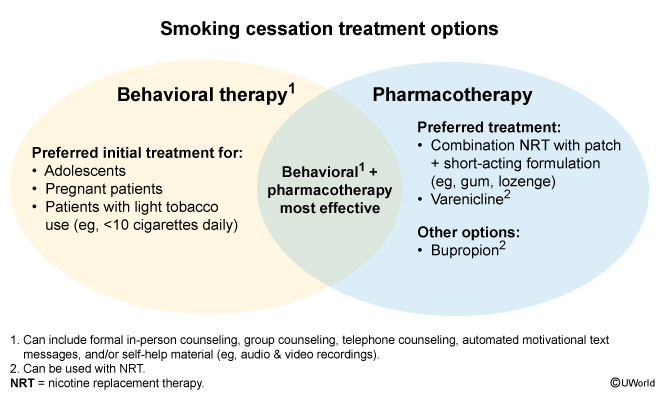Smoking Cessation
Article Sections
Introduction
Cigarette smoking is the leading cause of preventable disease, disability, and death among adults worldwide. Smoking cessation is an evidence-based suite of behavioral support and pharmacotherapy approaches that need to be individualized to each patient.
Pathophysiology
Problematic (chronic) tobacco use (eg, tobacco use disorder) involves complex physiological and psychosocial mechanisms:
- Physiological (ie, dependency): Nicotine strongly binds nicotinic acetylcholine receptors (nAChRs), primarily in the mesolimbic dopamine pathway. Tolerance (higher concentrations of nicotine needed to achieve similar levels of dopamine release) gradually develops. Sudden nicotine cessation leads to acute withdrawal (irritability, cravings), which is the hallmark of dependency.
- Psychosocial (ie, addiction): Patients with longtime smoking habits may develop distorted perceptions about their smoking behavior. For example, they may overestimate potential benefits (eg, weight control) while underestimating risks (eg, asthma flare-ups). Habits may contribute. For example, smoking is often linked to daily routines (eg, first cigarette with morning coffee), and oral fixation (satisfaction from the ritual of lighting up a cigarette, holding it, and exhaling smoke) can become a conditioned response to stress.
Continue Learning with UWorld
Get the full Smoking Cessation article plus rich visuals, real-world cases, and in-depth insights from medical experts, all available through the UWorld Medical Library.
Figures

Figure 1
Tables
Table 1
Table 2
Table 3
Table 4
Table 5